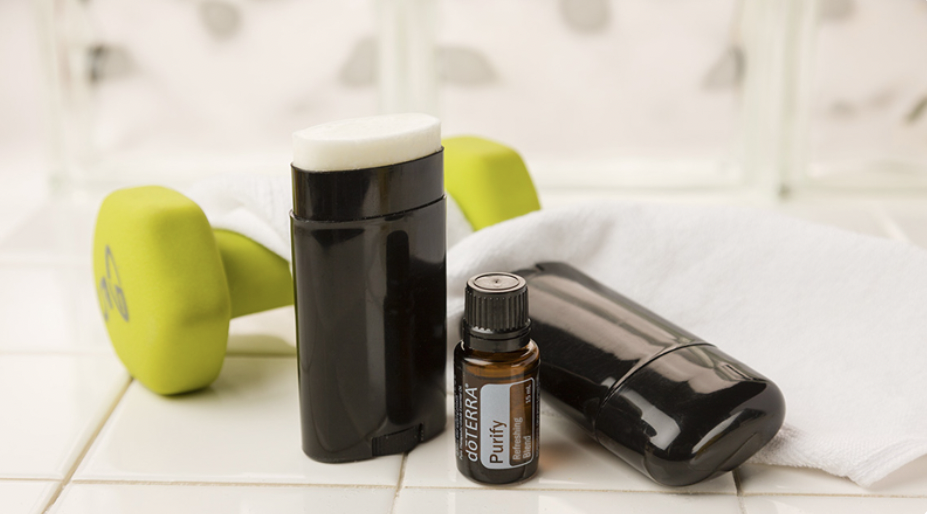Deodorant stick guide: Top brands, ingredients & TSA tips
Choosing the right deodorant stick can feel overwhelming. With hundreds of options—from conventional brands like Dove and Old Spice to natural mineral sticks and DIY recipes—it’s hard to know where to start. This comprehensive guide will walk you through everything you need to know about stick deodorants: what they are, how they work, ingredients to look for, top brands, TSA regulations, usage tips, health considerations, and more. Whether you’re hunting for a long‑lasting stick for travel, a gentle natural formula, or even planning your own homemade deodorant stick, you’ll find expert advice here to make an informed choice.
What Is a Deodorant Stick?
A deodorant stick is a solid form of deodorant housed in a twist‑up container. Unlike sprays or roll‑ons, sticks apply directly to the underarm skin, leaving little to no residue on clothing. Stick deodorants primarily mask or neutralize odor-causing bacteria; many also include antiperspirant agents (like aluminum compounds) to reduce sweat. Key benefits of deodorant sticks include portability, ease of application, and controlled dosing.
Deodorant vs. Antiperspirant vs. Deodorant Stick
-
Deodorant controls odor by targeting bacteria.
-
Antiperspirant reduces sweat by temporarily blocking sweat glands (usually containing aluminum salts).
-
Deodorant stick refers solely to the format; it can be a deodorant, antiperspirant, or both.
When comparing products, check the label for “antiperspirant” (required “Drug Facts” panel in the U.S.) if sweat reduction is your goal.
Key Ingredients: What to Watch For
-
Aluminum Compounds (e.g., aluminum zirconium tetrachlorohydrex gly): Effective antiperspirant, but some consumers avoid it due to sensitivities or personal preference.
-
Fragrance: Masks odor but can irritate sensitive skin. Look for “unscented” or hypoallergenic formulas if you’re prone to reactions.
-
Probiotics & Prebiotics: Emerging ingredients that balance underarm microbiome rather than killing all bacteria.
-
Natural Absorbents: Baking soda, arrowroot powder, and cornstarch absorb moisture in natural sticks.
-
Essential Oils & Botanical Extracts: Provide natural fragrance and potential antimicrobial benefits in brands like Schmidt’s natural deodorant stick.
Types of Deodorant Sticks
1. Conventional Brands
-
Dove deodorant stick: Known for moisturizing cream technology to protect underarm skin. Offers both deodorant and antiperspirant options.
-
Old Spice deodorant stick: Iconic “spicy” scents and strong antiperspirant protection; popular among men.
-
Axe deodorant stick: Youth‑oriented fragrances; often combined deodorant and antiperspirant.
-
Dior Sauvage deodorant stick: A premium fragrance experience that complements the Sauvage cologne line.
-
Versace deodorant stick: Luxury scents in stick form, ideal for those seeking a signature fragrance.
2. Natural & Mineral Sticks
-
Crystal deodorant stick: Mineral salt stick (potassium alum) that inhibits bacterial growth without aluminum chlorohydrate. See the Crystal mineral deodorant stick for an unscented option.
-
Schmidt’s natural deodorant stick: Plant‑powered with baking soda and arrowroot, available in various scents.
-
Routine Natural Beauty sticks: Crafted with clean ingredients and essential oils; explore their collection here.
3. DIY & Homemade Deodorant Stick
Creating your own deodorant stick (aka “homemade deodorant stick” or “DIY deodorant stick”) allows complete control over ingredients. Basic recipes involve mixing coconut oil, baking soda, arrowroot powder, and beeswax. Molds or empty stick containers can be purchased online for easy pouring and solidifying.
How to Choose the Right Stick Deodorant
-
Skin Sensitivity: If you experience irritation, opt for an unscented or baking soda‑free formula.
-
Sweat Level: For heavy perspiration, choose an antiperspirant stick with aluminum compounds. Natural sticks suit light to moderate sweat.
-
Fragrance Preference: From the bold Brut deodorant stick to subtle botanical blends, pick scents that complement your personal style.
-
Formulation: Check for moisturizing agents (aloe, glycerin) if you have dry or chafed underarms.
-
Travel‑Friendly: For air travel, a “mini deodorant stick” under 3.4 oz meets TSA guidelines (see below).
TSA Rules: Can You Bring a Stick Deodorant on a Plane?
Good news: stick deodorants are considered solids, not liquids or gels. They fall under the category of “solid toiletries,” so you can pack a full‑size deodorant stick in either your carry‑on or checked luggage without counting towards your 3‑1‑1 liquids limit. Always double‑check with your airline, but generally:
-
✔ Carry‑on: Full‑size stick deodorants (no size restriction)
-
✔ Checked baggage: No restrictions
This makes deodorant stick TSA travel hassle‑free—just toss it in your toiletry kit and go.
How to Use a Deodorant Stick Effectively
-
Preparation: Apply on clean, dry underarms. Use after showering for best results.
-
Application: Twist up 3–4 mm of product and swipe evenly across each underarm (about 3–5 swipes). Avoid overloading to prevent white marks on clothing.
-
Reapplication: Most conventional sticks last 24 hours; natural sticks may require a midday touch‑up.
-
Storage: Keep in a cool, dry place. High heat can soften the stick; refrigeration isn’t necessary but can prolong shelf life.
Performance & Longevity: How Long Does a Deodorant Stick Last?
-
Daily Use: A standard 2.6 oz stick, used conservatively, can last 3–4 months for one person, depending on frequency.
-
On the Go: A “mini deodorant stick” (0.5–1 oz) delivers 20–30 uses—ideal for gym bags or travel.
-
Shelf Life: Check the expiration date on the container. Natural sticks (without preservatives) typically last 6–12 months; conventional stains often last 2–3 years unopened.
Health Considerations: Are Deodorant Sticks Safe?
-
Aluminum Concerns: While the FDA deems aluminum antiperspirants safe, some research suggests a possible link to breast cancer or Alzheimer’s—though no definitive causal relationship has been established. If you’re concerned, choose a mineral deodorant stick or aluminum‑free formula.
-
Fragrance & Allergens: Artificial fragrances can provoke contact dermatitis. Patch‑test new sticks on a small underarm area before daily use.
-
pH & Microbiome: Overuse of antibacterial agents may disrupt the skin’s natural microbiome. Brands incorporating prebiotics aim to maintain healthy underarm flora.
Pros & Cons of Stick Deodorants
| Pros | Cons |
|---|---|
| Solid format avoids spills | Some sticks leave white residue on dark clothing |
| Travel‑friendly (solid, TSA‑approved) | Natural sticks may require frequent reapplication |
| Easy, mess‑free application | Aluminum‑based may irritate sensitive skin |
| Controlled dosing, less waste | Fragranced varieties may trigger allergies |
Why Do Americans Favor Stick Deodorant?
Stick deodorants dominate the U.S. market, accounting for over 60% of deodorant sales. Their popularity stems from decades of marketing emphasizing “clean, dry underarms,” combined with the convenience of twist‑up packaging. Surveys suggest American consumers prioritize antiperspirant efficacy—something spray or roll‑on formats sometimes struggle to match.
Environmental & Ethical Aspects
-
Packaging Waste: Conventional plastic tubes aren’t easily recyclable. Look for brands offering refillable containers or biodegradable cardboard sticks.
-
Cruelty‑Free & Vegan: Many natural brands (e.g., Schmidt’s, The Crystal) commit to cruelty‑free testing and vegan formulations. Verify certifications like Leaping Bunny or PETA.
Try Xiangxiang Daily Now!
We Help You Launch New Products, And Continue To Grow. Try Us With 20% Off Your First Order!
Conclusion
Choosing the ideal deodorant stick boils down to your priorities: odor control versus sweat reduction, natural ingredients versus antiperspirant strength, fragrance preferences, and eco‑credentials. From the dermatologist‑tested Dove deodorant stick to the minimalist crystal deodorant stick, there’s a format for every lifestyle. Armed with knowledge about ingredients, TSA rules, application techniques, and health considerations, you can confidently select a deodorant stick that keeps you fresh, comfortable, and true to your values.
FAQs
Is stick deodorant better?
It depends on your needs. Stick deodorants offer controlled application and solid format, but sprays may feel lighter and roll‑ons wetter.
What is a deodorant stick used for?
To neutralize underarm odor and, if formulated as an antiperspirant, reduce perspiration.
How many swipes of deodorant stick?
Generally, 3–5 swipes per underarm provide full coverage without excess residue.
Can you bring stick deodorant on a plane?
Yes. Sticks are classified as solids, so they’re allowed in carry‑on luggage without size limits.
How long does a stick of deodorant last?
An average 2.6 oz stick lasts 3–4 months with daily use; minis last about 20–30 uses.
Further Reading
Table of Contents
Latest Blog Posts
Check out the latest industry trends and take inspiration from our updated blogs, giving you a fresh insight to help boost your business.




